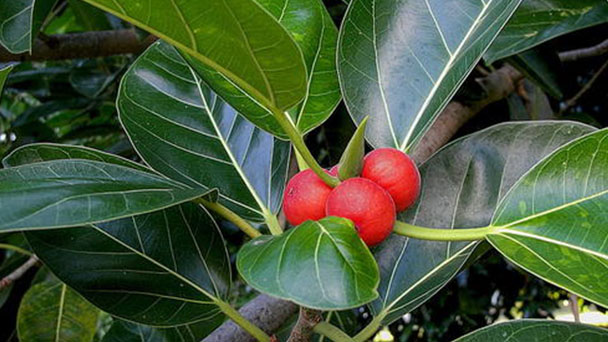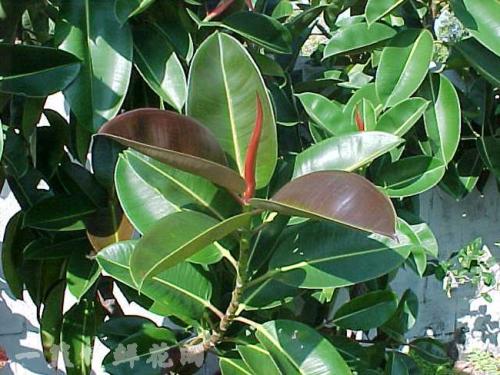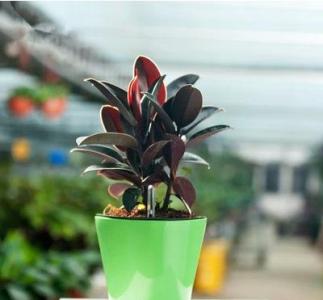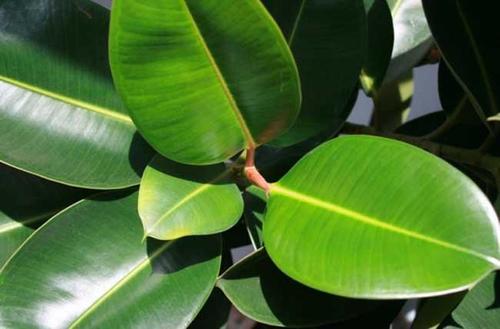How to grow and care for Rubber fig
Written by Maggie
Oct 29 2021

Rubber fig, with high ornamental value and easy to grow, becomes one of the most popular plants for growing at home. How to take care of it for better growth? Here are some caring tips for you.

Rubber Fig - Most Common House Plant
How to care for Rubber fig not growing new leaves
We often need to change soil for Rubber fig. After replacing the soil every time, a month of careful maintenance later, it can grow new leaves generally. If it is caused by improper watering, it needs timely drainage. Overdosing requires diluting the fertilizer or replacing the soil directly. It is best to give sufficient illumination to rubber fig at ordinary times, and control the temperature above 10℃ in winter to make it grow new leaves.
1. Adapt to new soil
The lack of new Rubber fig leaves may be caused by turning over the basin and changing the soil. Each time, it takes a period of time for Rubber fig to adapt to the new soil. During this period, it requires careful maintenance of Rubber fig, so that its roots can quickly adapt to the new soil, and new leaves will grow in about a month.
2. Water properly for Rubber fig
In case of improper watering of Rubber fig, what should be done if new leaves do not grow in Rubber fig? It is necessary to timely drain Rubber fig or replace a new soil for careful maintenance. We can water it once a week in normal times, and keep the soil slightly wet in winter, so that new thick leaves can grow out.
3. Apply fertilizer rationally for Rubber fig
In general, Rubber fig does not grow new leaves, which may also be caused by fertilization. In case of excessive fertilization, the fertilizer can be poured into the root to make the fertilizer flow from the bottom of the basin. In normal times, fertilizer solution can be applied once every 20 days, and phosphate potash fertilizer can be applied once a month in summer, but no fertilization is needed in winter, so as to promote new leaves in Rubber FIG.
4. Control the temperature for Rubber fig
It is better to give sufficient light to Rubber fig at ordinary times to avoid frostbitten plants with too low temperature, so that they cannot grow new leaves. Generally, Rubber fig prefers a temperature of 20 ~ 25℃. In winter, the temperature can be controlled at 10℃, so as to make Rubber fig grow better.

Rubber fig is one of the best trees for pots
How to care for Rubber fig having holes on leaves
Black patches and wormlike holes often appear on the leaves of Rubber fig This is caused by grey plaque. At the onset of the disease, small gray patches appear on the leaves, the edge of the leaf is dark brown, gray inside. In the later stage, the disease leaves are dried up, burst, and appear black granular objects. The disease is a fungal disease, most of which are fungal infection from leaf wounds. It can occur all the year round, and it mainly occurs from September to October.
Prevention methods:
(1) Reduce the artificial damage of the blade.
(2) cut off the sick leaves in time.
(3) The initial stage of the disease can be sprayed with carbendazine or topujin, with a certain therapeutic effect.

Rubber Fig - one of the best indoor trees
Read Next: Rubber Tree Plant (Rubber Fig) Care & Growing Guide
Latest Updated
- Benefits of Bugleweed - 7 Science-backed Health Benefits
- Bugleweed Dangers & Side Effects - Is It Poisonous?
- How to Plant Evergreen Trees - What You Should Know
- When to Plant Evergreens - Grow Guide for Evergreen Trees
- 12 Wonderful Evergreen Shrubs for Your Garden
- 12 Popular Evergreen Plants with Pictures for Beginners
- When And How To Prune A Lilac Bush Like a Pro
- How to Grow & Care for Lilac Vine (Hardenbergia Violacea)
- Japanese Lilac Tree (Syringa Reticulata) Care & Propagation Guide
- Shumard Oak Pros and Cons - What to Know
Popular Articles
- Winter maintenance of Antirrhinum Majus
- How to Grow Terminalia Mantaly Tree
- How to Grow and Care for Crossostephium Chinense
- How to grow Antirrhinum Majus in spring
- Peristeria Elata (Dove Orchid) Profile: Info & Care Guide
- Underwatered Snake Plant (Sansevieria Trifasciata) - Signs And How To Fix
- How to Care for Brazilian Jasmine Plant (Mandevilla Sanderi)
- How to Grow & Care for Graptopetalum Purple Delight in Summer
- Rosa Chinensis (China Rose): Plant Growing & Care Tips
- How to Care for Baby Sun Rose (Aptenia Cordifolia)